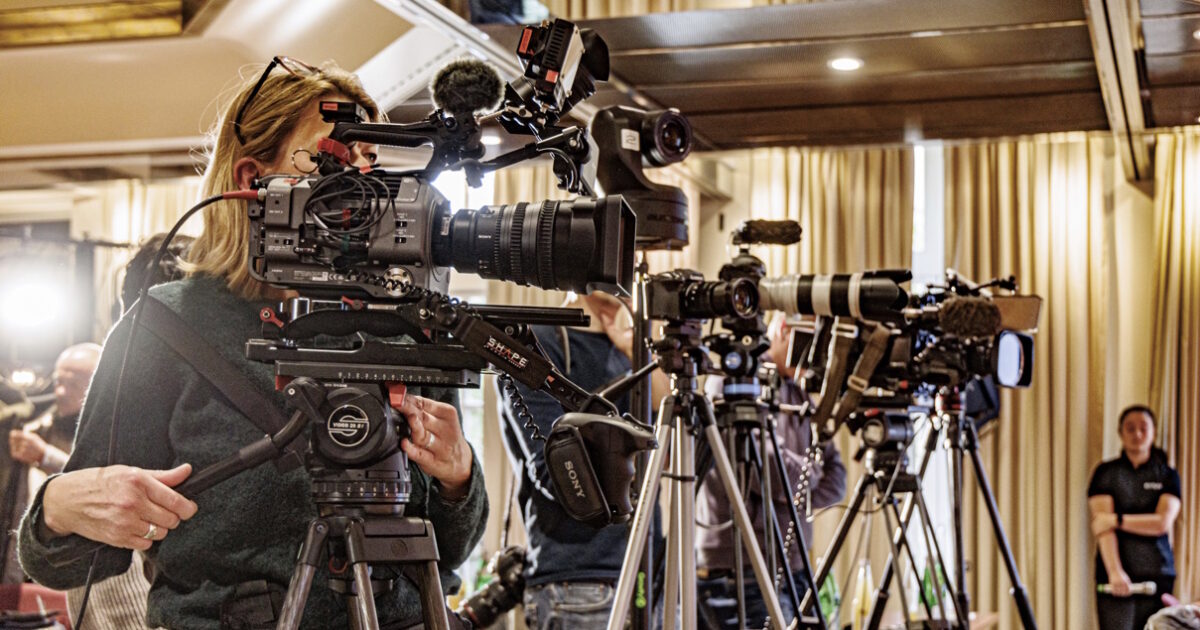Colorful and highly provocative advertisements. Spots that promote the woke agenda a lot. What are advertising companies trying to achieve? Deutsche Welle tries to explain the phenomenon.
One of the examples of the new era brought in by advertising agencies is Jaguar’s recent advertising campaign, which caused a huge backlash. Many fans of the famous automaker still feel annoyed by the colorful advertisement.
But what do we mean? In Jaguar’s spot, young models are presented, in impressive clothes in bright colors while they are painted and with intense make-up.
From the first image, you think the models are walking the catwalk as the messages “Live strongly” and “Don’t copy anything” appear. Viewers are left speechless when they realize that this is a Jaguar ad without a single car being shown.
The material that reached the eyes of the viewers was not out of place. This is a classic recipe rebrandingwhere a traditional product follows a revolutionary marketing strategy to expand its audience.
Copy nothing. #Jaguar pic.twitter.com/BfVhc3l09B
— Jaguar (@Jaguar) November 19, 2024
Does advertising have to “provoke” to stand out in the ephemeral publicity of social media?
This has always happened
Guido Zurstige, professor of mass media at the University of Tübingen, makes it clear that advertising that shocks or even goes beyond the ordinary is not something new, it just gets stronger in the age digitization.
A typical example of controversial advertising in the past was the Italian Benetton campaign, which depicted HIV-positive person and occupied even the Supreme Federal Court of Germany.
Later, Benetton caused a sensation with another “provocative” advertising campaign: in a photomontage collection, Angela Merkel was depicted giving a kiss on the mouth to Nicolas Sarkozy, as well as Pope Benedict in discussions with an imam.
German automaker Volkswagen received similar criticism in 2020 for an advertising spot for the new Golf, in which a huge white hand is seen pushing a black man away from the new model.
The issue was raised by the company’s board of directors and an internal investigation followed, which concluded that there was no intent to engage in racist behaviour.
A legal issue or a matter of “taste”?
In Germany, consumers who feel offended by specific advertising messages can appeal to the Board of Ethics of the advertising industry (something similar to the Communication Control Board in Greece).
In 2023 alone, 355 appeals were registered. Usually the protestors talk about discrimination based on gender or sexist attitudes.
However, the erotic element in advertising is not considered sexist by definition. The head of the Council of Ethics, Katia Heinschel von Heineg, makes it clear that “we are not competent to judge everyone’s taste”.
A typical example is the company True Fruits, which makes smoothies and which had launched an advertising campaign with puns that contained clear sexual innuendos about the “oral pleasure” that their products offer.
Some advertising platforms, such as German Railways and a city in southern Germany, refused to run the ad.
The company’s executives said that what is important is to boost the “brand profile” and they do not care about any backlash.
“Challenge in advertising is allowed,” says Katia Heinzel von Heineg, however.
The limit of the challenge was reached by an entry of the brewery Bitburger on Instagram in January 2023, with the timely occasion of the initiative “Dry January”, which advocates complete abstinence from alcohol for an entire month after the abuses that usually accompany the holidays from excessive consumption of food and drink.
Bitburger’s advertising message depicted one I was pregnant to enjoy beer without alcohol.
Von Heineg emphasizes that in this case the rules of the Ethics Council are not violated, since it is clearly a drink without alcohol.
However, Bitburger had received criticism for this listing, but as the head of the Ethics Council emphasizes, “whoever provokes must also accept criticism. This is not a bad thing, it can even lead to an extremely constructive discussion.”
“The challenge is not an end in itself”
“The challenge cannot be an end in itself in advertising,” Matias Spetgens, Creative Director at Scholz & Friends advertising agency, estimates.
“However, one has to look for new ways to attract the public’s attention, and usually those ways are out of the ordinary,” he continued.
Jaguar chief Rawdon Glover tells the Financial Times that his aim was not to launch a classic car commercial. And that’s because “if we did what everyone else does, we’d be ignored.”
There are also encouraging messages for Jaguar’s campaign. The comment in the industry magazine Horizont by Claudia Fischer-Appelt, Creative Director at the branding company Studio Karl Anders is typical: “Finally a relaunch that raises the spirits. Finally, a new thought, an authentic idea that looks ahead…”.
Source: Deutsche Welle
